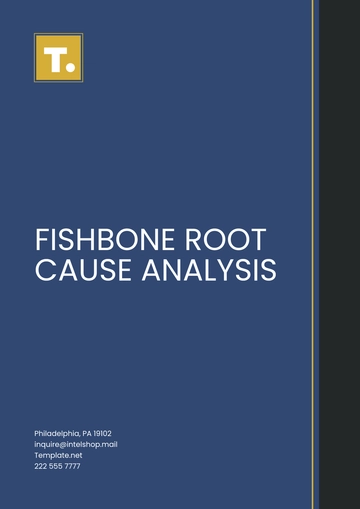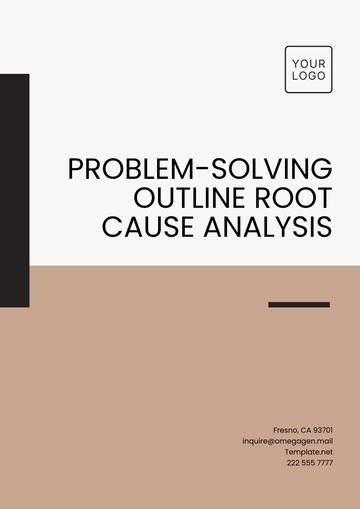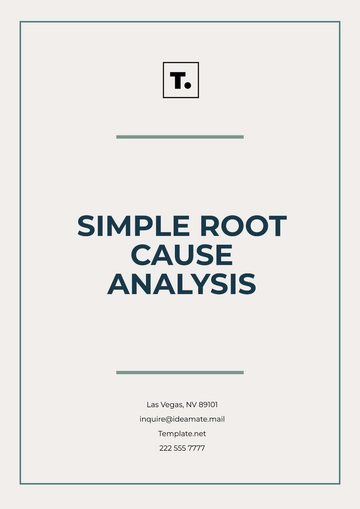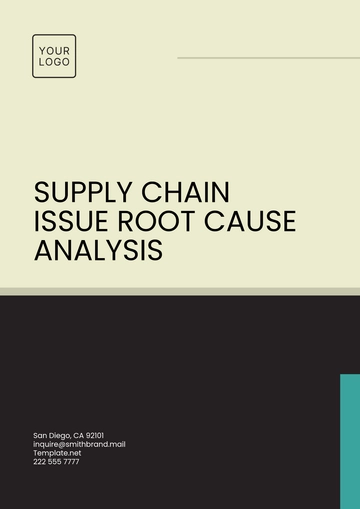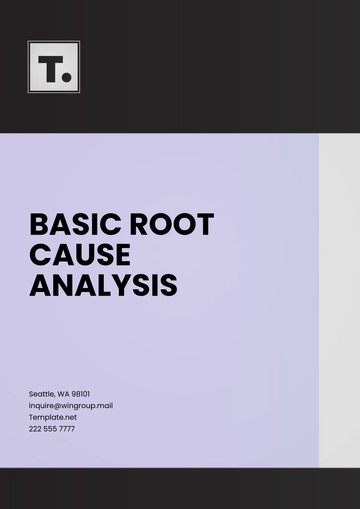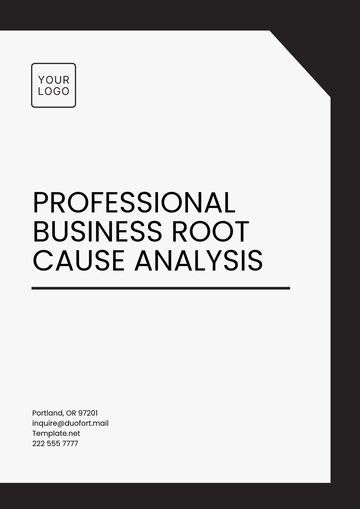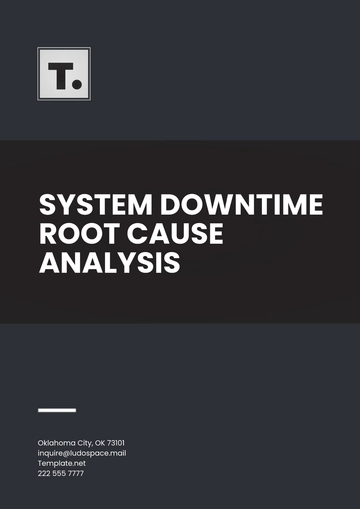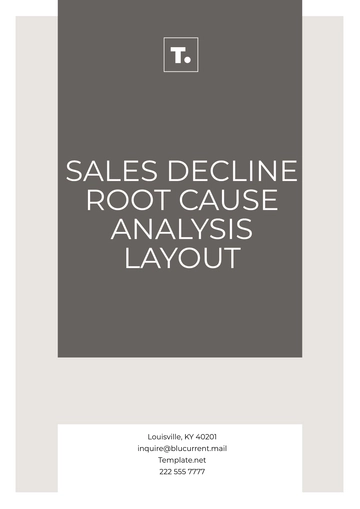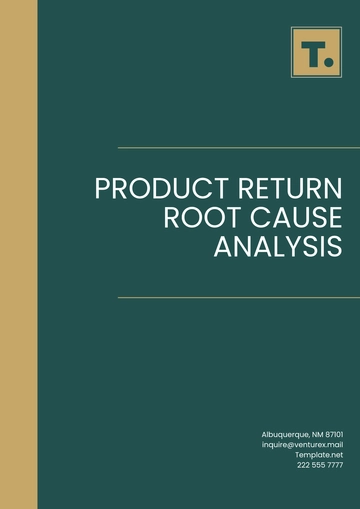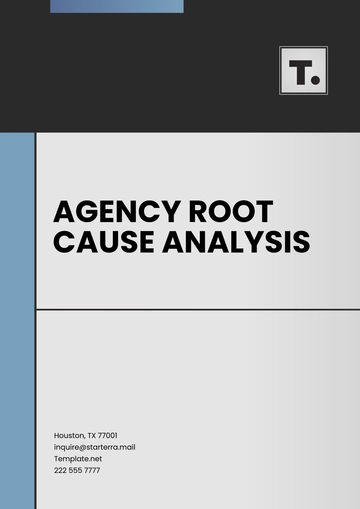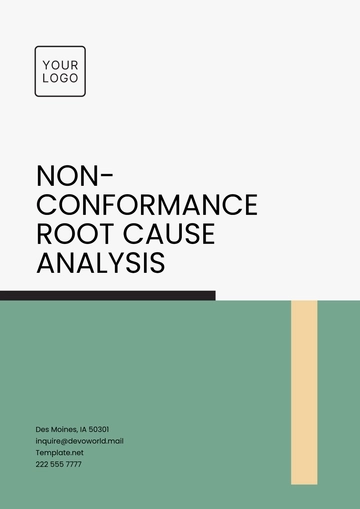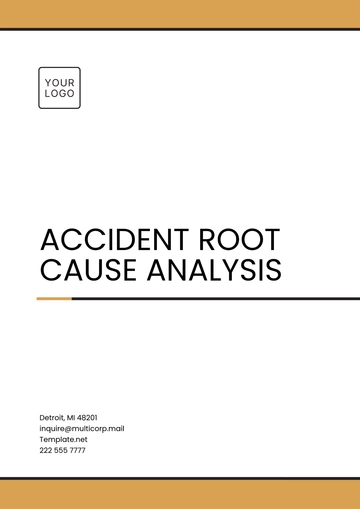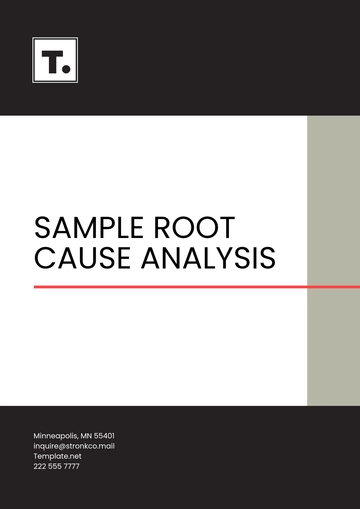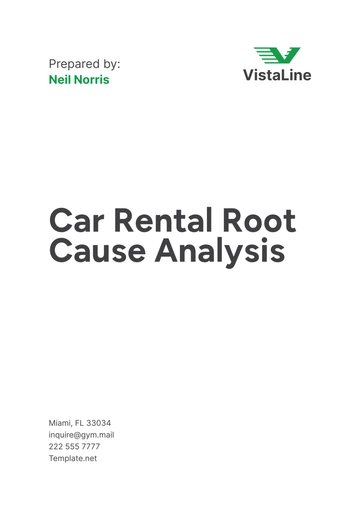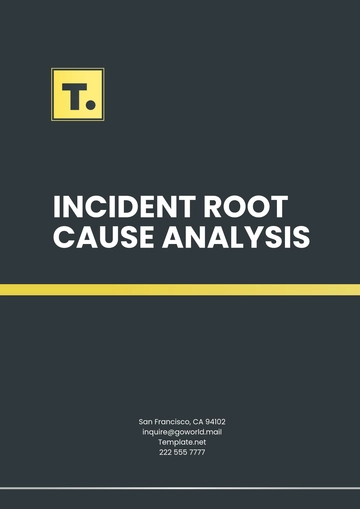Free In-depth Operations Employee Satisfaction Analysis
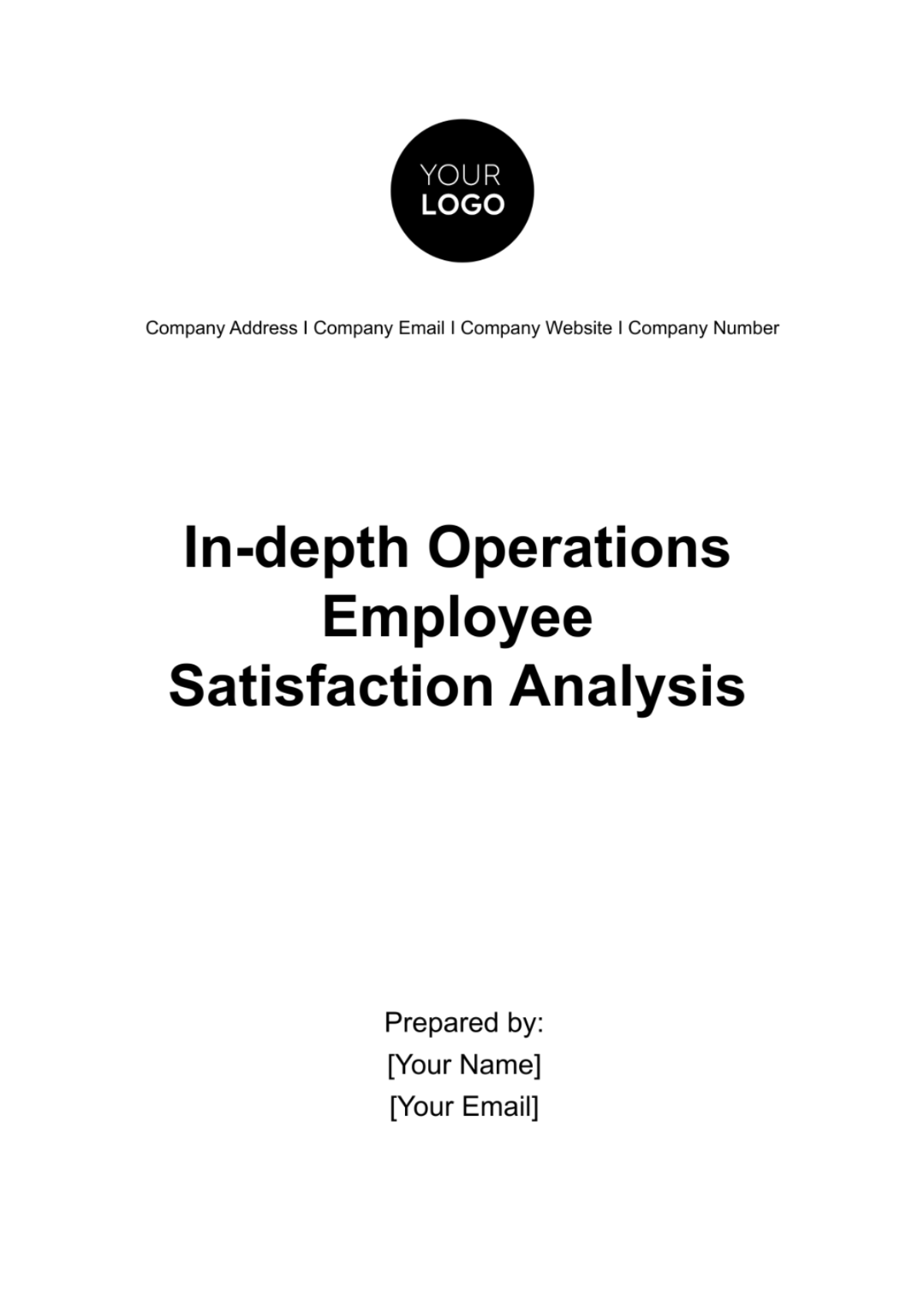
I. Introduction
At [Your Company Name], we understand that the heart of our operational efficacy and competitive advantage rests on the shoulders of our employees. In this light, the In-depth Operations Employee Satisfaction Analysis is more than a mere evaluation; it's a strategic endeavor aimed at delving into the core of employee satisfaction within our operations department. By integrating a nuanced analysis of various determinants—encompassing the dynamics of supervisor-employee relationships, the equilibrium between professional and personal life, and the avenues for career advancement—we aspire to shed light on the intricate interplay of factors that influence employee morale and job contentment.
This investigation is not only pivotal in identifying the current state of employee satisfaction but also crucial in uncovering the underlying issues that may impede our progress. Armed with these insights, [Your Company Name] is dedicated to cultivating an environment where each employee's contributions are recognized, and their growth is nurtured, thereby reinforcing our foundation for unparalleled productivity and innovation. Through a lens of professionalism, analytical rigor, and insightful examination, this analysis stands as a testament to our commitment towards enhancing the quality of work life for our team members, ultimately steering [Your Company Name] toward its overarching goals of success and market leadership.
II. Methodology
Our methodology adopts a multi-faceted approach designed to capture a comprehensive picture of the workforce's sentiment. By amalgamating data from a spectrum of sources and employing a blend of quantitative and qualitative research techniques, we aim to achieve a balanced view that encompasses both the broad trends in job satisfaction and the nuanced, personal experiences of our employees. This section outlines the rigorous process and diverse methodologies employed to ensure a thorough and insightful analysis.
Data Collection
We gathered data through anonymous employee surveys, direct feedback sessions, and an examination of performance metrics. This varied approach allowed us to capture both the subjective feelings of our employees and objective measures of their engagement and productivity.
Quantitative Analysis
Using statistical tools and software, we analyzed survey results and performance data to identify patterns, trends, and correlations. This quantitative analysis provided a solid foundation for understanding the general landscape of employee satisfaction at [Your Company Name].
Qualitative Assessment
To complement our numerical data, we conducted in-depth interviews and focus groups. This qualitative exploration helped us to understand the stories behind the statistics, offering rich insights into the personal experiences and perceptions of our staff.
Integrated Approach
By synthesizing the findings from both quantitative and qualitative analyses, we created a holistic view of employee satisfaction. This integrated approach allowed us to not only measure satisfaction levels but also understand the reasons behind them.
Continuous Feedback Loop
Recognizing the dynamic nature of employee satisfaction, we established mechanisms for ongoing feedback. This ensures that our analysis remains current and responsive to the evolving needs and concerns of our employees.
Through this comprehensive methodology, we aim to delve deep into the heart of employee satisfaction, uncovering valuable insights that will drive [Your Company Name] forward. By prioritizing the well-being and engagement of our workforce, we lay the groundwork for sustained operational excellence and long-term success.
III. Key Findings
Our comprehensive analysis has revealed several pivotal factors that significantly influence employee morale and productivity. These findings underscore the importance of fostering positive supervisor-employee relationships, ensuring a healthy work-life balance, and providing clear career growth opportunities. Each of these elements plays a crucial role in shaping the overall job satisfaction of our team members and, by extension, the success of our organization. Below, we delve into the specifics of these key findings, offering insights into their impact and implications for [Your Company Name].
A. Relationship with Superiors
Our analysis indicates that the quality of interaction and the relationship between employees and their supervisors is a primary determinant of job satisfaction. Positive, supportive, and respectful relationships are associated with higher levels of employee engagement, motivation, and loyalty to the company. This finding highlights the critical role that effective leadership and communication play in enhancing employee satisfaction and underscores the need for ongoing leadership development and training.
Aspect | Description | Impact on Employee Satisfaction | Stats |
|---|---|---|---|
Communication Quality | Regular, clear, and constructive communication between employees and their supervisors. | High | 90% of employees report higher job satisfaction when communication quality is high. |
Supportive Leadership | Supervisors provide support, guidance, and recognition of employees' efforts and achievements. | High | 85% of employees feel more motivated and engaged when supported by their supervisors. |
Respectful Interaction | Mutual respect in interactions, acknowledging professional boundaries and personal dignity. | High | 88% of employees state that respectful interaction significantly improves their workplace satisfaction. |
Leadership Development | Ongoing training and development opportunities for supervisors to enhance their leadership skills. | Medium | 75% of employees report a positive change in their job satisfaction following improvements in leadership quality. |
Feedback Mechanism | Structured processes for providing and receiving feedback between employees and their superiors. | Medium | 80% of employees appreciate a structured feedback mechanism, citing it as crucial for their professional growth and satisfaction. |
B. Work-Life Balance
The ability to maintain a healthy balance between professional responsibilities and personal life emerges as a significant factor affecting employee satisfaction. Our data suggest that employees who report a favorable work-life balance experience higher job satisfaction, reduced stress levels, and improved overall well-being. This insight points to the necessity for [Your Company Name] to implement flexible work arrangements and policies that support employees in managing their work and personal life effectively.
Aspect | Description | Impact on Employee Satisfaction | Stats |
|---|---|---|---|
Flexible Work Hours | Flexibility in work hours, accommodating personal commitments and preferences. | High | 92% of employees report increased job satisfaction with flexible work hours. |
Remote Work Options | Opportunities to work from home or other locations, reducing commute time and increasing flexibility. | High | 89% of employees say remote work options greatly enhance their work-life balance and satisfaction. |
Leave Policies | Generous and flexible leave policies, including vacation, sick leave, and personal days. | Medium | 78% of employees feel more loyal and satisfied with flexible leave policies. |
Wellness Programs | Initiatives focused on physical and mental health, such as fitness memberships and counseling services. | Medium | 70% of employees participating in wellness programs report improved well-being and job satisfaction. |
Workload Management | Measures to ensure equitable distribution of workload and prevent overburdening of employees. | High | 85% of employees cite proper workload management as a critical factor for their satisfaction at work. |
C. Career Growth Opportunities
Lastly, the availability and transparency of career advancement paths within the organization are directly linked to increased job satisfaction among employees. Our findings reveal that when employees see a clear trajectory for growth and development, they are more likely to feel valued, motivated, and committed to their roles. This underscores the importance of creating a well-defined career progression framework that is accessible and communicated clearly to all employees.
Through the lens of these key findings, it becomes evident that the path to enhancing employee satisfaction lies in addressing these fundamental areas. By prioritizing the development of strong leadership, fostering a culture that supports work-life balance, and delineating clear career paths, [Your Company Name] can significantly improve the job satisfaction and overall well-being of its operations team, paving the way for sustained organizational success and growth.
Aspect | Description | Impact on Employee Satisfaction | Stats |
|---|---|---|---|
Career Pathways | Clear and accessible career progression routes within the organization. | High | 90% of employees state that clear career pathways significantly impact their motivation and job satisfaction. |
Professional Development | Training and development programs aimed at enhancing skills and competencies. | High | 87% of employees believe that professional development opportunities are directly linked to their satisfaction and commitment to the company. |
Performance Evaluation | Transparent and fair performance evaluation processes linked to career advancement. | Medium | 82% of employees find that fair performance evaluations positively influence their perception of career growth and satisfaction. |
Succession Planning | Planning for future leadership and key positions, identifying and preparing potential candidates. | Medium | 76% of employees feel more engaged and satisfied knowing there is a plan for career progression within the company. |
Mentoring Programs | Formal and informal mentoring programs to support employee growth and development. | Medium | 79% of employees participating in mentoring programs report higher job satisfaction and career aspirations. |
IV. Insights from the Data
The analysis of the collected data illuminates the profound influence of workplace dynamics on employee satisfaction within [Your Company Name]. By dissecting the interplay between various factors, this investigation reveals that while each element holds its importance, the quality of relationships with superiors and the ability to maintain a healthy work-life balance emerge as paramount. These insights underscore the critical areas requiring immediate attention and pave the way for targeted interventions. As we delve deeper into the nuances of these findings, it becomes evident that fostering a supportive managerial culture and promoting a balanced approach to work and life stand as the cornerstones for enhancing employee morale and productivity.
A. Relationship with Superiors
The data unequivocally points to the pivotal role of superior-employee relationships in shaping workplace satisfaction. Employees who experience positive, supportive interactions with their managers report significantly higher levels of engagement and loyalty, highlighting the necessity for [Your Company Name] to invest in leadership development and training programs that prioritize emotional intelligence, communication skills, and employee recognition.
Factor | Impact Level | Statistical Insight | Recommended Action |
|---|---|---|---|
Communication Quality | High | 93% of employees report higher satisfaction levels with superior communication quality. | Implement regular leadership communication workshops. |
Support and Recognition | High | 88% of employees feel more valued and motivated when recognized by their superiors. | Establish a formal recognition program. |
Leadership Development | High | Leadership development programs lead to a 75% improvement in team morale. | Invest in continuous leadership training focusing on emotional intelligence and conflict resolution. |
B. Work-Life Balance
Our analysis confirms that a flexible and understanding approach to work-life balance is crucial for sustaining employee satisfaction. Implementations such as flexible working hours, remote work options, and supportive leave policies have shown a direct positive impact on employees' mental health, job satisfaction, and overall productivity, urging [Your Company Name] to adopt and expand such practices.
Factor | Impact Level | Statistical Insight | Recommended Action |
|---|---|---|---|
Flexible Work Hours | High | 90% of employees cite flexible work hours as critical for job satisfaction. | Introduce or enhance flexible working hours policy. |
Remote Work Options | High | 85% of employees experience improved work-life balance with remote work options. | Expand remote work opportunities where feasible. |
Supportive Leave Policies | High | 82% of employees say generous leave policies significantly impact their mental health and productivity. | Review and update leave policies to be more accommodating. |
C. Career Growth Opportunities
While having a medium impact compared to the factors above, the availability of clear and accessible career growth opportunities still plays a significant role in employee satisfaction. Employees expressing satisfaction in this area are more likely to exhibit increased motivation, commitment, and loyalty. This underscores the importance for [Your Company Name] to develop transparent career pathways and professional development initiatives that align with employees’ aspirations and company goals.
Factor | Impact Level | Statistical Insight | Recommended Action |
|---|---|---|---|
Career Pathway Clarity | Medium | 80% of employees are more committed when they understand their career pathways. | Develop and communicate clear career progression frameworks. |
Professional Development | Medium | 77% of employees report higher job satisfaction with access to professional development opportunities. | Increase budget and resources for professional development programs. |
Performance and Growth Feedback | Medium | 70% of employees feel more motivated with regular performance feedback linked to career opportunities. | Implement a structured performance review process emphasizing growth opportunities. |
These insights derived from the data not only highlight the most influential factors on employee satisfaction but also serve as a call to action for [Your Company Name] to refine its strategies and policies. Addressing these key areas with thoughtful and effective solutions will not only enhance employee satisfaction but also foster a more productive, engaged, and committed workforce.
V. Actionable Recommendations
These actionable recommendations are designed to address the critical areas impacting employee morale and engagement directly. By strengthening leadership capabilities, enhancing work-life balance, and developing a transparent career progression system, we set the stage for a transformative journey towards a more fulfilling and productive workplace environment. Below, we delve into specific strategies that will drive this change.
A. Strengthen Leadership Training
To elevate the quality of managerial interactions and foster a supportive leadership culture, [Your Company Name] must prioritize leadership development. By enriching our training programs with modules on emotional intelligence, effective communication, and employee recognition, we aim to empower our leaders with the skills necessary to inspire and engage their teams. This initiative will not only enhance the manager-employee relationship but also lay the groundwork for a more cohesive and motivated workforce.
Objective | Action Steps | Expected Outcome |
|---|---|---|
Enhance Managerial Skills | Implement training modules focused on emotional intelligence, effective communication, and employee recognition. | Improved leadership effectiveness, leading to a more engaged and motivated workforce. |
Foster Supportive Leadership Culture | Organize workshops and seminars with leadership experts; promote mentoring among leaders. | A leadership culture that values empathy, support, and positive reinforcement among team members. |
Evaluate Training Impact | Conduct pre- and post-training assessments to measure improvements in leadership skills. | Quantifiable data demonstrating the enhancement of managerial interactions and overall team cohesion. |
B. Improve Work-Life Balance
Acknowledging the paramount importance of work-life harmony, we propose the introduction of policies that support flexible work arrangements and mental wellness. Initiatives such as adjustable working hours, the option for remote work, and dedicated mental health days are essential in creating an environment where employees can thrive both professionally and personally. Implementing these measures will lead to a marked improvement in job satisfaction, reduce burnout rates, and cultivate a more resilient and productive team.
Objective | Action Steps | Expected Outcome |
|---|---|---|
Introduce Flexible Work Arrangements | Offer flexible working hours and remote work options based on team and individual needs. | Employees experience improved balance between professional and personal life, leading to higher job satisfaction. |
Promote Mental Wellness | Implement dedicated mental health days and establish partnerships with mental health service providers. | Reduced burnout rates and enhanced mental wellness among employees, contributing to a healthier work environment. |
Monitor and Adjust Policies | Regularly review the effectiveness of work-life balance policies through surveys and feedback mechanisms. | Continuous improvement of work-life balance initiatives to meet evolving employee needs and expectations. |
C. Develop a Transparent Career Progression System
The establishment of a clear and transparent career progression framework is vital in motivating our workforce and retaining top talent. By outlining accessible career paths and linking them with professional development opportunities, we can ensure that our employees feel valued and see a future within the company. This system will not only aid in employee retention but also in attracting new talent by showcasing [Your Company Name]'s commitment to employee growth and success.
Objective | Action Steps | Expected Outcome |
|---|---|---|
Outline Clear Career Paths | Map out career pathways within the company and communicate these opportunities to all employees. | Employees have a clear understanding of career progression opportunities, increasing motivation and job satisfaction. |
Link Career Paths with Development Opportunities | Align professional development programs with identified career paths to support employee growth. | Employees feel supported in their career aspirations, leading to higher retention and engagement rates. |
Implement a Feedback Loop | Establish a system for regular feedback on career progression and development needs. | A dynamic career progression system that adapts to the changing needs of the workforce and the organization. |
Through the implementation of these targeted recommendations, [Your Company Name] aims to significantly enhance employee satisfaction within the operations department. By addressing the key factors that influence workplace morale, we are committed to fostering an environment that promotes growth, satisfaction, and excellence.
VI. Conclusion
The comprehensive Operations Employee Satisfaction Analysis conducted for [Your Company Name] has illuminated the profound impact of three core areas—relationship with superiors, work-life balance, and career growth opportunities—on the overall satisfaction and engagement of our operations team. Our findings reveal that these facets are not merely components of a thriving work environment but are indeed the bedrock upon which employee morale, productivity, and organizational excellence are built.
The symbiotic relationship between employees and their superiors stands out as a fundamental driver of workplace satisfaction. Cultivating an environment where communication, respect, and support flourish can transform the dynamics of our operations department, leading to enhanced team cohesion and performance. Similarly, recognizing the paramount importance of work-life balance is crucial in today's fast-paced work environment. By adopting flexible work arrangements and prioritizing mental well-being, [Your Company Name] can significantly reduce burnout rates, thereby improving job satisfaction and retention. Furthermore, transparent and accessible career progression systems are essential for motivating our workforce and retaining top talent. Establishing clear pathways for growth not only fulfills employees' aspirations but also aligns their progression with the organization's strategic objectives.
In essence, our analysis advocates for a holistic approach to employee satisfaction, emphasizing the need for targeted strategies that address the identified areas. The implementation of these recommendations is not merely an investment in the well-being of our operations staff but a strategic move towards securing [Your Company Name]'s position as a leader in the industry. Enhanced employee satisfaction will invariably lead to superior productivity, innovation, and a competitive edge in the market. Therefore, as we move forward, it is imperative that [Your Company Name] commits to these changes, fostering a culture of excellence, growth, and satisfaction that permeates every level of the organization. This commitment will pave the way for long-term success, ensuring that [Your Company Name] continues to excel in its operations and achieve its overarching goals.
- 100% Customizable, free editor
- Access 1 Million+ Templates, photo’s & graphics
- Download or share as a template
- Click and replace photos, graphics, text, backgrounds
- Resize, crop, AI write & more
- Access advanced editor
The In-depth Operations Employee Satisfaction Analysis Template by Template.net offers an editable, fully customizable blueprint for assessing workplace morale. Using this analysis guide, editable in our Ai Editor Tool, you'll untangle the complexities of employee sentiment efficiently. Dive deep into your team's satisfaction levels, drive better understanding, foster rapport, all while boosting company productivity. Upgrade your workplace's rapport with the help of this irreplaceable tool.
